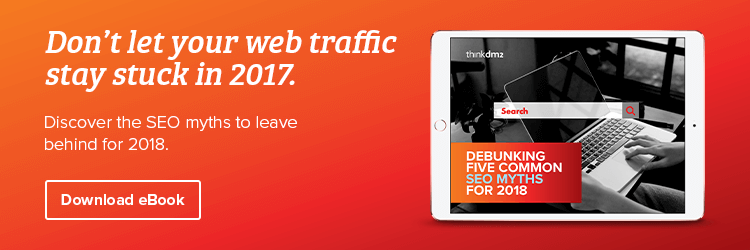

image credit: PK Studio/shutterstock.com
Have you ever looked at your Google analytics and wondered why some webpages get bombarded with traffic, while others are stuck in search engine limbo? Even when you’ve spent plenty of time optimizing your b2b website, Google is occasionally a bit stubborn. Here’s how you can optimize around the many ways Google ranks your b2b website and content.
Google only understands the text on your b2b website
As with every search engine, Google interprets your website structure based on your URL and the text you include on your site. This means that no matter how vibrant and attractive your website may be to a visitor, Google’s algorithms will never quite understand all the time you spent choosing the best colors and graphics. Luckily, there are several ways you can optimize around search engine limitations:
- Always use alt-text with your images. Even though Google can’t see the detailed marketing image you chose, it can read the alt-text you’ve associated with it.
- Shorten your URLs so Google won’t experience an information overload. Though Google’s own URL shortener has changed as of April 2018, alternatives such at Bitly and TextMagic exist.
- Use anchor links for your b2b website navigation and content. This will allow Google’s algorithms to follow the path of interlinking you’ve done on your site.
- Provide a detailed meta-description for your content, to give Google even more keywords to look out for. It’s best to keep this under 160 characters.
Google is a great mindreader; it predicts search intent with its suggestions
When making a list of different topics your b2b business wants to rank for, you’ll want to give extra focus to the possible searches a user will make. For example, if a user is interested in “SEO strategies,” they will find several alternatives from Google’s search recommendations. These are just a handful of additional suggestions Google made:
- SEO geo targeting strategies
- SEO link building strategies
- SEO content strategies
- SEO and SEM Strategies
Considering all the related searches user can make, you’ll need to go into more detail with your topics as well. Using the previous example, your chain of topics may look something like this:
- What is SEO?
- SEO for small businesses
- SEO marketing
- Examples of SEO
Your b2b website needs linking authority to rank at the top in Google
Google has high standards for content quality; and this doesn’t stop at the keywords on your b2b website. Providing both internal and external links are an important factor that Google looks for.
External linking builds credibility for your website and creates a network of connected links for Google’s algorithms to recognize. This will increase the chances of your b2b website being found in search engines. When choosing which sources to link to, look for a website that has the following:
- High domain authority
- Consistently updated content, generally on a daily to weekly basis
- Publishes content topics that align with your website
Internal linking goes hand-in-hand with your topic clusters. By linking your content to similar webpages on your site, you’re letting Google know that those ideas are connected. This means when a user searches for web development guidelines, they may find several related pieces of content you’ve published on your website.
Thinkdm2 is a New Jersey digital marketing and branding agency that specializes in web development and content strategies for b2b businesses. If your website traffic is losing its momentum, you may be falling for some common SEO traps. Download your free ebook to learn about the SEO myths that are keeping your traffic from growing.



